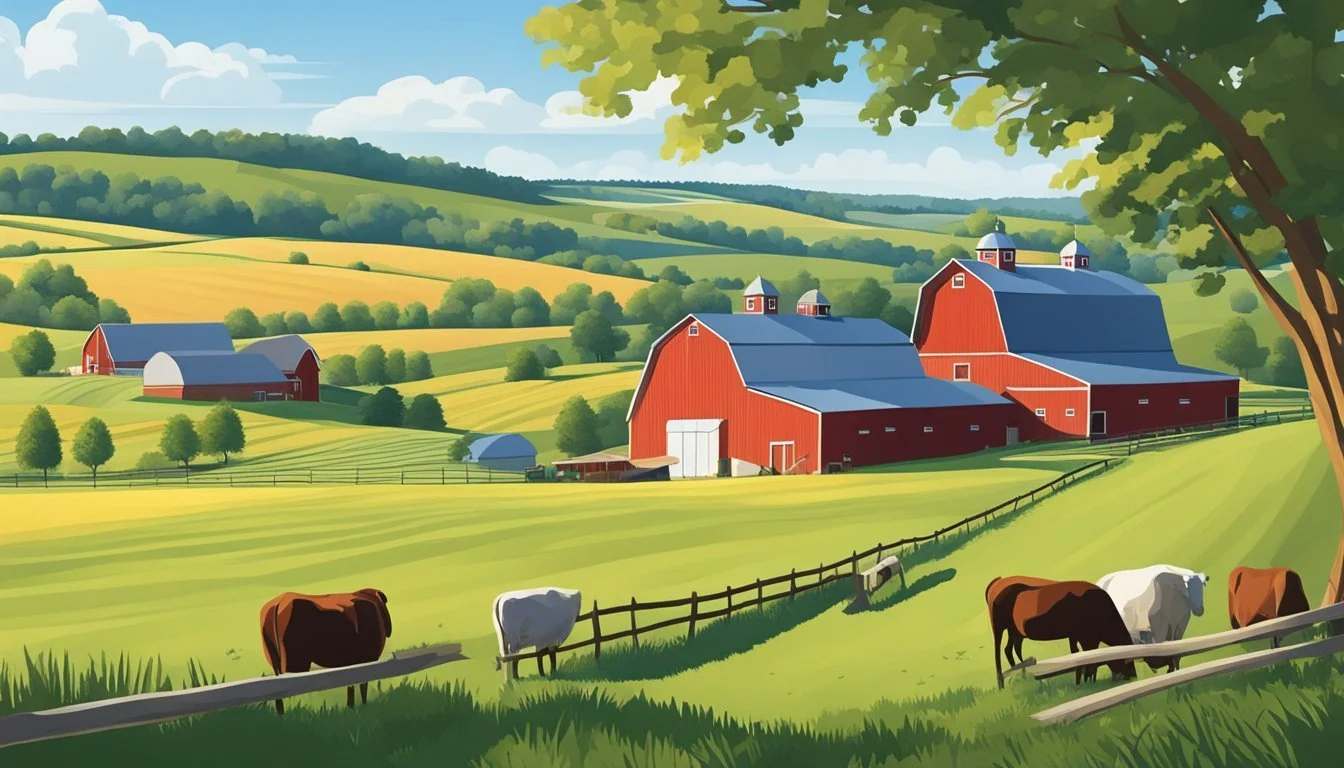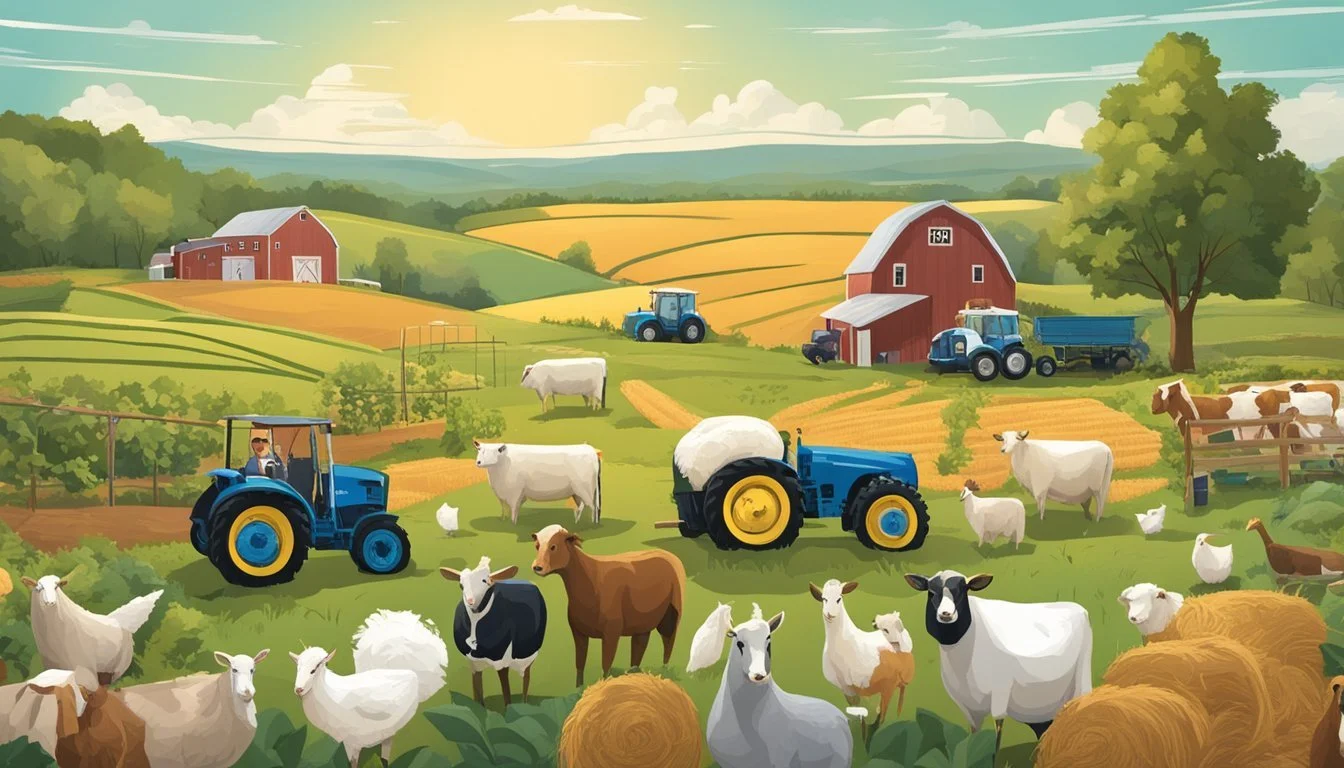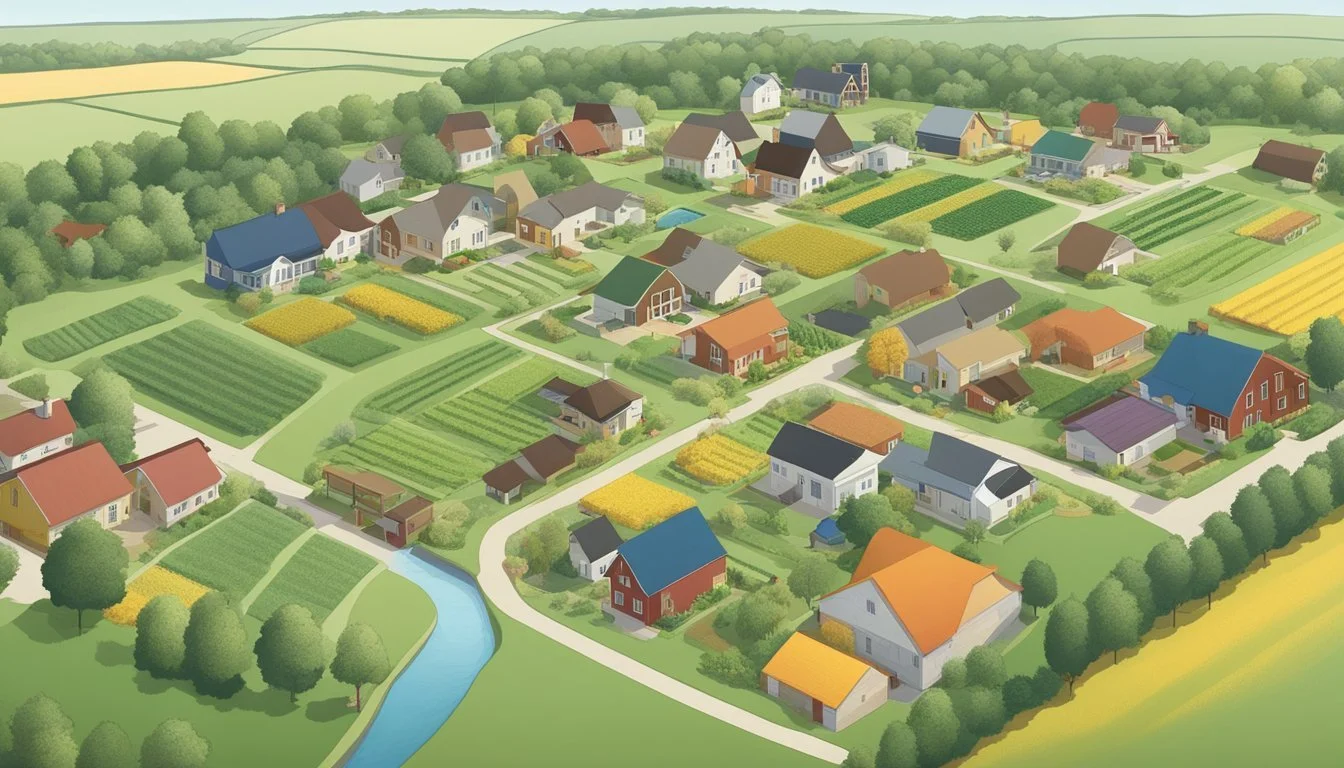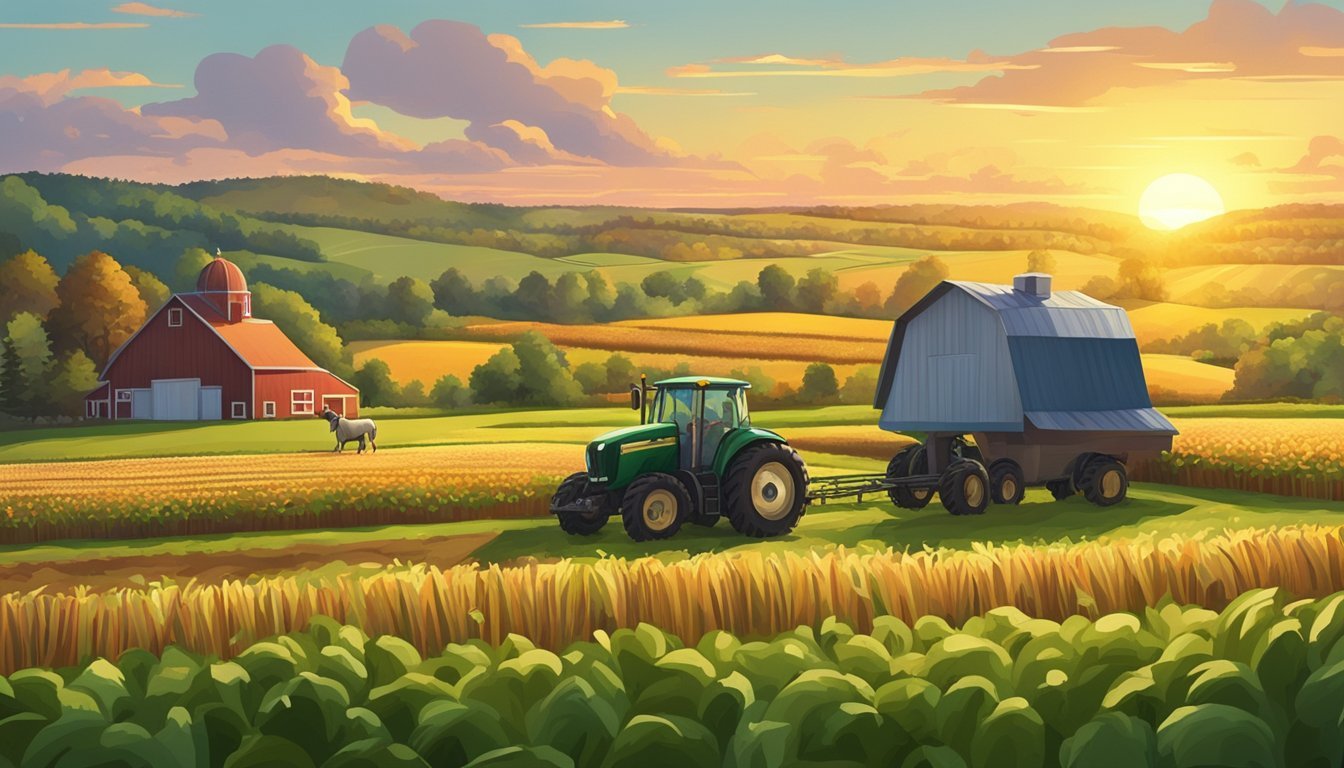Right to Farm Law in Wisconsin
Understanding Protections for Farmers
Wisconsin's Right to Farm Law stands as a legislative response to the evolving dynamics between agricultural and non-farm land use. Instituted in the early 1980s and strengthened in 1995, the statute aims to support and protect the agricultural community by providing legal defenses against nuisance lawsuits. This is particularly significant in areas where residential expansion meets traditional farming operations, potentially leading to conflicts over noise, odor, and other inconveniences typically associated with farming activities.
The law's intent is to preserve the agricultural heritage of Wisconsin by safeguarding farmers who adhere to accepted management practices from the pressures of urban sprawl and the related disputes that can emerge. Although it has been rarely invoked in court, the existence of the statute itself appears to have had a deterrent effect on the filing of nuisance lawsuits against farmers, thus reinforcing the stability of agricultural enterprises within the state's economy.
Despite the protections the Right to Farm Law offers, Wisconsin has experienced a decline in the number of farms and farmland acreage. This trend may suggest that while the law provides a framework for mitigating legal conflicts between farmers and their non-farming neighbors, it does not address all challenges faced by the state's agricultural sector. The ongoing discourse around the law continues to shape Wisconsin's approach to balancing farm viability with residential interests in a changing landscape.
Historical Background
The historical contours of the Right-to-Farm Law reveal a legislative effort to protect Wisconsin's farming heritage against urban encroachment and unnecessary legal disputes.
Origins of Right-to-Farm Laws
Right-to-Farm laws arose as a national movement aimed at safeguarding agricultural practices from increasing urbanization and conflicts with non-farming neighbors. At their core, these laws typically restrict nuisance lawsuits against farmers, provided the agricultural activities are conducted in a manner consistent with good farming practices.
Development in Wisconsin
In Wisconsin, the Right-to-Farm law took shape with the enactment of Wisconsin Statutes 823.08 in 1982. This legislation was bolstered in 1995 with amendments designed to offer stronger protections. Its genesis was partly a reaction to the case of State v. Quality Egg Farm, Inc., which underscored the tension between agricultural operations and neighboring property interests. Wisconsin's statute reflects a deliberate intent to preserve farmland by insulating responsible farm operations from certain lawsuits.
Key Provisions of the Right to Farm Law
The Right to Farm Law in Wisconsin incorporates critical measures primarily aimed at protecting agricultural operations and offering clarity on the legal landscape in which farmers operate.
Nuisance Protection for Farmers
The cornerstone of Wisconsin’s Right to Farm Law is providing nuisance protection for farmers. The legislation safeguards farmers from nuisance lawsuits, under the condition that their farming practices are lawful and consistent. It recognizes that certain farm operations may emit odors, noises, or dust, but as long as these are within legal farming activities, they are protected. This protection is crucial for allowing farmers to conduct their work without the continuous threat of legal challenges based on being a nuisance to neighboring properties.
Rules and Limitations
Under the Right to Farm Law, there are defined rules and limitations that stipulate the extent of the protections given. Farmers must adhere to recognized agricultural practices and maintain consistency in their operations. Significantly, the law underlines that protection is not absolute; improper or negligent practices do not receive the law's shield. For instance:
Consistency of operation is key; sudden changes in the scale or type of farming may not be protected.
Standard agricultural practices must be followed, deviating from these can void protection.
Public Health Considerations
Public health and safety are not overshadowed by the Right to Farm Law. While the law favors agricultural continuity, it does not permit practices that compromise public health or safety. The provisions ensure that farming practices must not cause substantial health risks to the surrounding community. Rather, the law aims to strike a balance between the rights of farmers to manage their operations and the community’s right to a clean and safe environment. Compliance with environmental regulations and other public health standards remains a mandatory aspect of the Right to Farm Law.
Legal Framework
Wisconsin's Right to Farm Law provides a structured legal environment that addresses various aspects of agricultural operations in relation to land use, legal disputes, and court rulings. Within this framework, the law aims to protect and sustain agricultural activities against certain types of lawsuits.
Zoning and Land Use
Under Wisconsin's Right to Farm Law, agricultural uses of land are afforded certain protections. Zoning laws cannot be applied in a way that would unreasonably restrict or regulate farm structures or farming practices if the farm is not a public nuisance. This is to inhibit the conversion of farmland into non-agricultural uses. Farmers have standing to assert these rights when faced with zoning regulations that threaten agricultural activities.
Civil Litigation Process
The law directs courts to lean in favor of agricultural uses in civil litigation cases, particularly nuisance suits. To be protected, the farming operation must be in compliance with existing laws and not considered a nuisance when it began. This statutory framework reduces the occurrence of lawsuits where the plaintiff seeks compensation for nuisance claims against a defendant farmer. The process guides how damages may be awarded and under what circumstances farms are insulated from such liability.
Role of Circuit and Appellate Courts
Wisconsin's legal structure assigns the initial role of interpreting the Right to Farm Law to circuit courts. These courts are first in line to handle disputes related to agricultural operations. Their decisions on whether the farming practice is lawful and not a nuisance by nature hold substantial weight. Appellate courts come into play upon appeals of circuit court decisions, reviewing interpretations of the law, and making final decisions that may affect how future cases are judged. These courts ensure the law’s consistent application and resolve conflicts in lower court interpretations.
Case Studies
This section examines specific legal incidents and evaluates the effects of Wisconsin's Right to Farm Law through real-world applications and studies.
Notable Wisconsin Cases
The Zawistowski Case: In a prominent application of the Right to Farm law, the Zawistowski case was significant as the statute was fully upheld in court. The ruling underscored the law's intention to protect lawful farming practices, as the farmers involved were shielded from nuisance lawsuits and even granted compensation for legal fees.
Impact Assessments
Rusty Rumley's Involvement: Rusty Rumley, a senior staff attorney at the National Agricultural Law Center, has noted that Right to Farm laws tend to limit nuisance actions against farmers. These laws aim to safeguard agricultural operations that are conducted in a manner consistent with good farming practices and established prior to surrounding non-agricultural activities.
Wisconsin Farm Bureau Federation: As an advocate for farmers, the Wisconsin Farm Bureau has supported the Right to Farm law, recognizing its role in protecting existing agricultural operations. Despite ongoing debates, the Bureau asserts these laws are crucial for maintaining the viability of Wisconsin's agricultural industry against nuisance claims.
Controversies and Challenges
The Right to Farm Law in Wisconsin has been the center of poignant debates over its implications for the environment and the rights of farmers versus neighboring landowners. These confrontations have primarily centered around issues of environmental impact and nuisance complaints.
Environmental Concerns
Pollution and Encroachment: Critics argue that the law shields agricultural operations, particularly large farms, from accountability for environmental impacts such as water and air pollution. Concerns center on how these farms, especially Concentrated Animal Feeding Operations (CAFOs), manage waste which can lead to water contamination and soil degradation. Environmental advocates also highlight the concern of farmland encroachment on natural habitats, potentially upsetting local ecosystems and contributing to issues such as flooding.
Odor and Dust: The proliferation of large farms under the umbrella of the Right to Farm Law is also linked to an increase in odor and dust complaints. Residents in close proximity to farming operations often report that these emissions disrupt their quality of life, yet the law complicates their ability to seek relief or remediation.
Nuisance vs. Farmers' Rights
Nuisance Claims: Landowners neighboring farms have sought legal recourse under claims of nuisance, citing disruptions caused by odor, dust, and other by-products of agricultural activities. The Right to Farm Law, however, positions these farming practices as generally permissible, challenging residents’ nuisance claims and often leaving them without a robust legal pathway for addressing grievances.
Farmers' Rights: On the other side, proponents hold that the Right to Farm Law is essential for protecting the agricultural industry from the encroachment of nonagricultural land uses and unwarranted nuisance claims. They argue it is critical for preserving the farming heritage and the economic viability of rural communities, positing that without such protections, Wisconsin’s agriculture could be significantly harmed by litigation and suburbanization pressures.
Impact on Local Communities
The Right to Farm Law in Wisconsin has direct implications for local units of government and surrounding communities, shaping the economic landscape and influencing the social fabric of both family farms and suburban areas.
Economic Effects
Local economies often hinge on the health of family farms. Wisconsin's Right to Farm Law aims to protect these agricultural practices, shielding them from nuisance claims that could otherwise lead to costly litigation. However, the presence of large farming operations, particularly Concentrated Animal Feeding Operations (CAFOs), can have mixed impacts on local government finances. On one hand, CAFOs can contribute significantly to the local tax base, but on the other hand, they may necessitate increased infrastructure spending on roads and utilities, and impact neighboring properties.
Family Farms: These entities often benefit from the law, as it can help to preserve farming as a viable local industry.
Local Units of Government: Although they stand to gain tax revenue, they must balance this against the potential costs of accommodating large-scale farms.
Social Dynamics
The Right to Farm Law also affects social dynamics within communities. There is often tension between family farms and new suburban developments encroaching on rural areas. Family farms are typically seen as integral to the local community identity, while the expansion of suburban areas brings a set of values and expectations that may conflict with agricultural practices. Neighboring properties are a focal point of these tensions, with residents expressing concerns about farm-related noise, odors, and environmental issues:
Family Farms and Neighboring Properties: Farm operations are protected from nuisance suits, but could potentially affect the quality of life for nearby non-farming residents.
Suburban Areas: The expansion into suburban areas may intensify the demand for local governance to mediate between agricultural and residential interests.
Right to Farm in the Context of Modern Agriculture
Wisconsin's Right to Farm law plays a crucial role in modern agriculture, influencing how farming practices evolve and how farmers adopt new techniques. The law provides a foundational legal framework that supports agricultural pursuits, while technological advancements and innovative farming methods continue to reshape the agricultural landscape.
Advances in Farming Practices
Modern agriculture has seen significant technological growth that impacts farm management and yield. These advances include precision agriculture tools like GPS-guided tractors and drones for monitoring crop health. Sensor technology helps in optimizing irrigation and detecting potential issues with crops, enhancing productivity while adhering to lawful farming practices.
New equipment enables farmers to carry out their operations more efficiently, aligning with Right to Farm protections that support agricultural innovations. Farming equipment has become more sophisticated, incorporating features such as automated steering systems and data analytics, ensuring that crop production is both high-yielding and legally compliant.
Diversification and Specialty Farming
Diversification in agriculture, which includes ventures like beekeeping and fish farming, is rising as farmers seek additional revenue streams and respond to market demands. Specialty farming operations, which often focus on organic produce, heritage breeds, or unique crop varieties, benefit from Right to Farm laws by securing a degree of legal certainty for these farming practices.
Beekeeping, for instance, is an area of special farming covered by Right to Farm laws, protecting beekeepers as long as they adhere to good production practices. The law ensures that these specialized agricultural pursuits, vital for pollinating crops and producing honey, can operate without undue fear of nuisance lawsuits.
As Wisconsin's agriculture diversifies, the Right to Farm law provides stability, allowing new and traditional farming operations to coexist and thrive within the state's legal framework.
Broader Legal Implications
The Right to Farm Law in Wisconsin echoes legal frameworks that have implications beyond simple nuisance protections for farmers. These implications are especially evident when considering legislation like the National Labor Relations Act (NLRA) and the College Athlete Right to Organize Act.
National Labor Relations Act (NLRA)
The NLRA, established by the National Labor Relations Board (NLRB), oversees labor practices nationwide, and its principles intersect with industries such as Wisconsin's agricultural sector. It governs the rights of employees to unionize and engage in collective bargaining. In sectors like farming, where equipment and apparel are integral to operational efficacy, the NLRA ensures that labor disputes are handled within a structured legal framework, protecting the rights of employees while providing avenues for dispute resolution.
College Athlete Right to Organize Act
Policymakers are considering the College Athlete Right to Organize Act, which would afford collegiate-level student athletes the right to unionize and be recognized under the NLRA. Historical precedents such as the attempt by Northwestern University's football team to unionize, with implications for institutions like the Big Ten Conference, highlight the jurisdictional challenges faced. The Act could redefine student athletes' participation in extracurricular activities as labor, entitling them to collective bargaining rights. This development, supported by entities like the Service Employees International Union, could significantly alter the collegiate athletic landscape, including sports like Dartmouth’s men’s basketball team.
Future Considerations and Policy Recommendations
The balance between agricultural sustainability and community relations is critical. Legislation and policies must evolve to protect both farmers and residents, ensuring agriculture's viability and neighborhood harmony.
Frivolous Nuisance Lawsuit Prevention
The escalation of frivolous nuisance lawsuits is a concern for Wisconsin's agricultural sector. Policy recommendations should focus on refining definitions within the Right to Farm Law to create clear distinctions between legitimate grievances and groundless complaints. The introduction of a peak performance program could incentivize farmers to employ best practices that exceed the standard legal requirements, thus reducing the incidence of nuisance claims.
Enforcement: Tighten the legal framework to discourage unfounded lawsuits.
Education: Develop educational initiatives to inform about the lawful parameters of farming operations and corresponding resident rights.
Resolution Programs: Establish mediation programs as a first step before litigation to resolve disputes amicably.
Protective Measures for Farmers and Neighbors
To ensure that protections under the Right to Farm Law are effective and equitable, several actions can be implemented. Policies must aim at safeguarding farming operations from unwarranted suits while also protecting neighbors from legitimate grievances.
Buffer Zones: Implement mandatory buffer zones between agricultural and residential areas to minimize conflict.
Compliance Monitors: Employ independent auditors to ensure farmers abide by good agricultural practices, thus preventing any potential violations.
Public Reporting: Establish a transparent system for reporting and tracking complaints and violations to encourage accountability.
Through tailored policies that prevent frivolous lawsuits and provide robust protections, Wisconsin can create a more sustainable and legally sound agricultural environment.









